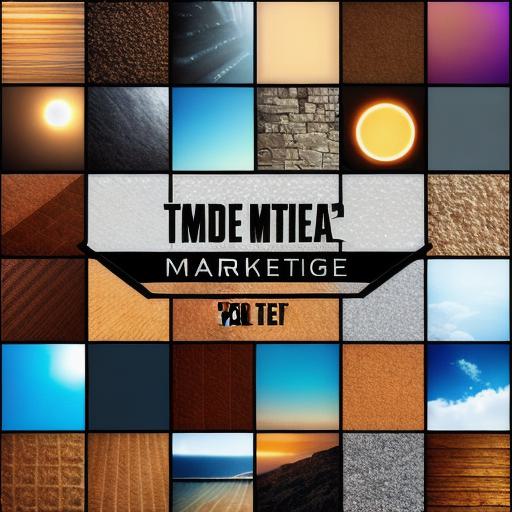Creating a marketing plan is crucial for any business looking to grow its customer base and increase sales. A well-crafted plan provides a roadmap for reaching your target audience, setting goals, and achieving success. However, with so many components to consider, it can be overwhelming to know where to start. This guide will walk you through the key elements of a marketing plan template that will help you create an effective strategy.
-
Executive
Summary
The executive summary is the first section of your marketing plan and provides a brief overview of your business, target market, and marketing objectives. It should be concise and easy to understand, giving readers a quick glimpse into what they can expect from the rest of the document. The executive summary should include:
- A brief description of your business and its products or services
- An overview of your target market, including demographics, psychographics, and behavior
- Your marketing objectives, such as increasing brand awareness, generating leads, or driving sales
-
Market Analysis
The market analysis section provides a detailed look at your industry, competition, and target audience. This section should be based on research and analysis of primary and secondary sources, including market reports, surveys, and competitor analyses. The market analysis should include:
- An overview of the industry, including size, growth rate, and trends
- A competitive landscape, including key players, their strengths and weaknesses, and market share
- An analysis of your target audience, including demographics, psychographics, and behavior patterns
-
Marketing Mix
The marketing mix section outlines the tactics and strategies you will use to reach your target audience. This section should be based on the principles of the 4Ps: product, price, promotion, and place. The marketing mix should include:
- Product: A description of your products or services, including features, benefits, and unique selling points
- Price: An analysis of pricing strategies, including cost-plus pricing, value-based pricing, and competitive pricing
- Promotion: A plan for reaching your target audience through various channels, such as advertising, content marketing, social media, and public relations
- Place: A description of the distribution channels you will use to reach your target audience, including e-commerce, brick-and-mortar stores, and online marketplaces
-
Marketing Objectives and Goals
The marketing objectives and goals section outlines the specific targets you want to achieve through your marketing efforts. These objectives should be specific, measurable, attainable, relevant, and time-bound (SMART). The marketing objectives and goals section should include:
- Specific marketing objectives, such as increasing brand awareness, generating leads, or driving sales
- SMART goals that are aligned with your objectives and can be measured through key performance indicators (KPIs)
- Marketing Budget
The marketing budget section outlines the financial resources you will allocate to your marketing efforts. This section should include a detailed breakdown of expenses for each tactic, as well as a plan for tracking and managing your budget. The marketing budget section should include:- A detailed breakdown of expenses for each tactic, including advertising, content creation, social media management, and event marketing
- A plan for tracking and managing your budget, including regular reporting and analysis of KPIs
- Marketing Metrics and Analytics
The marketing metrics and analytics section outlines the key performance indicators (KPIs) you will use to measure the success of your marketing efforts. This section should include a detailed plan for collecting and analyzing data, as well as actionable insights based on that data. The marketing metrics and analytics section should include:- A list of KPIs that are relevant to your marketing objectives, such as website traffic, conversion rates, social media engagement, and customer acquisition costs (CAC)
- A plan for collecting and analyzing data, including tools and technologies for tracking and reporting on KPIs
-
Marketing Tactics and Strategies
The marketing tactics and strategies section outlines the specific actions you will take to achieve your marketing objectives. This section should be based on research and analysis of best practices in your industry, as well as your own unique strengths and resources. The marketing tactics and strategies section should include:
- A list of marketing tactics and strategies that are relevant to your target audience and marketing objectives, such as content marketing, influencer marketing, email marketing, and paid advertising
- A plan for executing each tactic and strategy, including timelines, budgets, and responsibilities

-
Marketing Timeline and Milestones
The marketing timeline and milestones section outlines the specific deadlines and milestones for your marketing plan. This section should include a detailed schedule for completing each phase of your plan, as well as regular check-ins to ensure progress and adjustments as needed. The marketing timeline and milestones section should include:
- A detailed schedule for completing each phase of your plan, including deadlines and responsibilities
- Regular check-ins with your team and stakeholders to ensure progress and make adjustments as needed
-
Summary
The conclusion section summarizes the key points of your marketing plan template and provides a call to action for your team and stakeholders. The conclusion should include:
- A summary of your marketing plan, including your objectives, tactics, and strategies
- A call to action for your team and stakeholders, such as implementing your plan or scheduling regular progress check-ins
Example Marketing Plan Template
To help you understand how a marketing plan template looks like in practice, here is an example of a marketing plan for a small business selling organic skincare products:
Executive
Summary
Our company, Earthly Beauty, produces and sells organic skincare products that are free from harmful chemicals. Our target market is women aged 25-45 who are health-conscious and environmentally aware. Our marketing objectives include increasing brand awareness, generating leads, and driving sales.
Market Analysis
The global skincare industry is worth $166 billion, with a projected growth rate of 5.5% from 2021 to 2028. The organic skincare market is growing rapidly, with an estimated CAGR of 9.3% from 2020 to 2027. Our main competitors are established brands like L’Oréal and The Body Shop, as well as new entrants like Tula Beauty and Burt’s Bees.
Our target audience is health-conscious women aged 25-45 who are looking for natural and organic skincare products that are free from harmful chemicals. They are active on social media and are interested in sustainability and eco-friendly products.
Marketing Mix
Our marketing mix includes:
Product: Our products are made with natural and organic ingredients and are free from harmful chemicals. We offer a range of skincare products, including cleansers, moisturizers, sunscreens, and face masks.
Price: We use a cost-plus pricing model, which means we add a fixed percentage to our production costs to determine the final price. Our prices are competitive with other organic skincare brands.
Promotion: We will promote our products through social media advertising, influencer marketing, content marketing, and email marketing. We will also participate in trade shows and events to showcase our products.
Place: We will sell our products online through our own website and through third-party retailers like Whole Foods and Sephora.
Marketing Objectives and Goals
Our marketing objectives include increasing brand awareness, generating leads, and driving sales. Our specific goals are:
- Increase brand awareness by 50% through social media advertising and influencer marketing

- Generate 1,000 leads per month through email marketing and content marketing
- Achieve a conversion rate of 5% for online sales
Marketing Budget and Metrics
Our marketing budget is $20,000 per year, which will be allocated to social media advertising, influencer marketing, content marketing, email marketing, and trade shows. We will track our KPIs using tools like Google Analytics and Hootsuite Insights. Our key metrics include website traffic, conversion rates, social media engagement, and customer acquisition costs (CAC).
Marketing Tactics and Strategies
Our marketing tactics and strategies include:
- Social media advertising: We will run targeted ads on Instagram and Facebook to reach our target audience.
- Influencer marketing: We will partner with influencers in the skincare and wellness space to promote our products.
- Content marketing: We will create blog posts, videos, and infographics to educate our target audience about the benefits of organic skincare.
- Email marketing: We will send newsletters and promotional emails to our email list to drive sales and generate leads.
- Trade shows: We will participate in trade shows and events to showcase our products and connect with potential retailers.
Marketing Timeline and Milestones
Our marketing timeline includes the following milestones:
- Month 1-2: Develop marketing plan and budget, create content and assets, set up social media accounts and email list.
- Month 3-4: Launch social media advertising campaign, begin influencer partnerships, start content marketing efforts.
- Month 5-6: Launch email marketing campaign, participate in first trade show.
- Month 7-8: Analyze KPIs, make adjustments to campaigns as needed, launch second trade show.
- Month 9-10: Analyze KPIs, make adjustments to campaigns as needed, prepare for holiday season promotions.
- Month 11-12: Analyze KPIs, make adjustments to campaigns as needed, plan for next year’s marketing efforts.
Summary
In conclusion, our marketing plan template provides a comprehensive roadmap for a small business looking to grow its organic skincare brand. By following this template and regularly analyzing and adjusting our KPIs, we can achieve our marketing objectives and drive sales.




